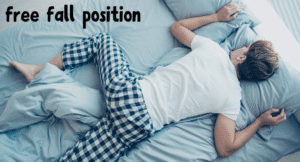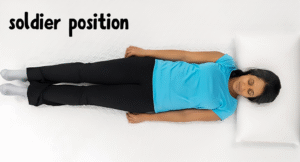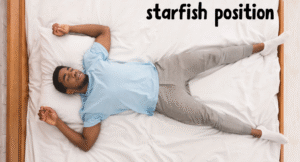Best sleeping positions are essential for good sleep quality and a healthy lifestyle. Many experts link the sleeping positions to health conditions, which means how your sleeping habit makes your health condition better or worse.
Dr. Daniella Marchetti, a licensed clinical psychologist and sleep specialist, states, “Not only does it impact your sleep quality at night, how well you’re sleeping or perceiving to have slept, but it can impact any existing medical conditions such as cardiovascular issues, sleep apnea, GERD, or even conditions like pregnancy.” For instance, sleeping on your back may cause your jaw and tongue to hinder your airways, resulting in snoring and sleep apnea, she added.
Best Sleeping Positions
According to Dr. Marchetti, finding your perfect sleeping position is based on your comfort, peaceful sleep, and managing any medical condition. Even if you don’t have any medical condition, still you need a good position. “The best sleeping position is always going to be the one that maintains proper spinal alignment with even weight distribution.”
Here is the list of some sleeping positions that may benefit you.
Fetal Position
The most popular way to sleep is the fetal position. More than 4 out of 10 people sleep in the fetal position, particularly women. It’s a healthy way to sleep due to its natural alignment with your spine to let it rest in a natural way. This position is good for pregnant women and wards off obstructive sleep apnea, back pain, acid reflux, and Alzheimer’s. If you have shoulder pain, then the fetal position is not ideal for you. Because it can cause more pressure on this area.

Log Position
15% of people prefer the log position. It’s good for health as well because it can help you in lowering your neck pain and back pain. It can also ward off your sleep apnea since your spine stays in place.

Free Fall Position
Sleeping on your stomach may cause lower back, neck, and shoulder pain. However, it can help you with sleep apnea and snoring.

Soldier Position
Sleeping on your back may cause snoring, which is not only irritating for others but also disturbs your sleep and can create problems for the carotid artery. This position is also not ideal if you have sleep apnea. But on the other hand, it’s really useful with acid reflux.

Starfish Position
The starfish position may cause snoring and sleep apnea and helps with acid reflux like the soldier position. However, this position may be useful for shoulder, lower back, and neck pain and reduce wrinkles.

Sleeping Styles
Sleeping style is a body’s natural tendency to sleep at a specific time, called chronotype. It affects everything we do, such as desiring food, exercise habits, and even body core temperature. According to researchers, chronotype decides your sleep pattern according to your age, gender, and other genetic factors, and it changes as you grow older.
There are four types of chronotypes, known as sleeping styles, which are
- Early Bird: Wake up early in the morning and sleep early as well.
- Night Owls: Sleep after 1 a.m. and wake up late.
- Hummingbird: Sleeping situation between early birds and night owls. 55% of people have fallen into this group.
- Bimodal: Having both morning and evening tendencies.


